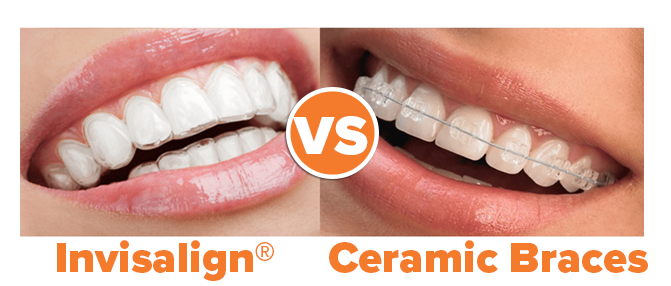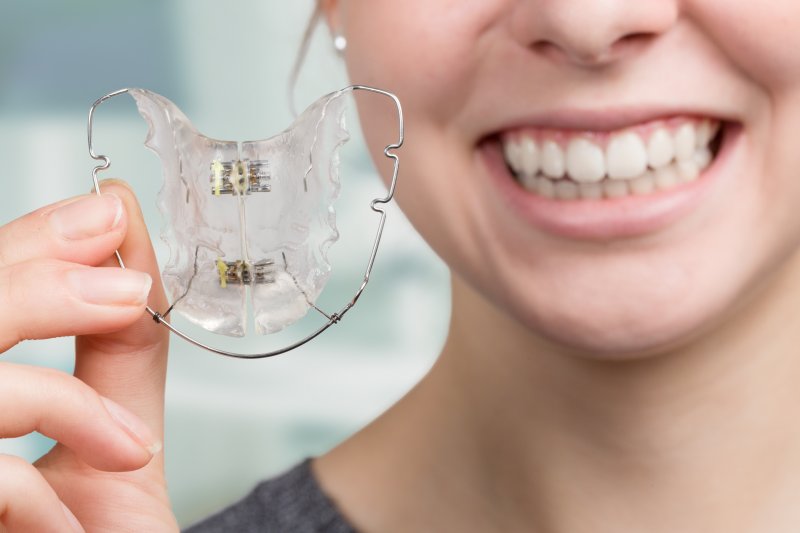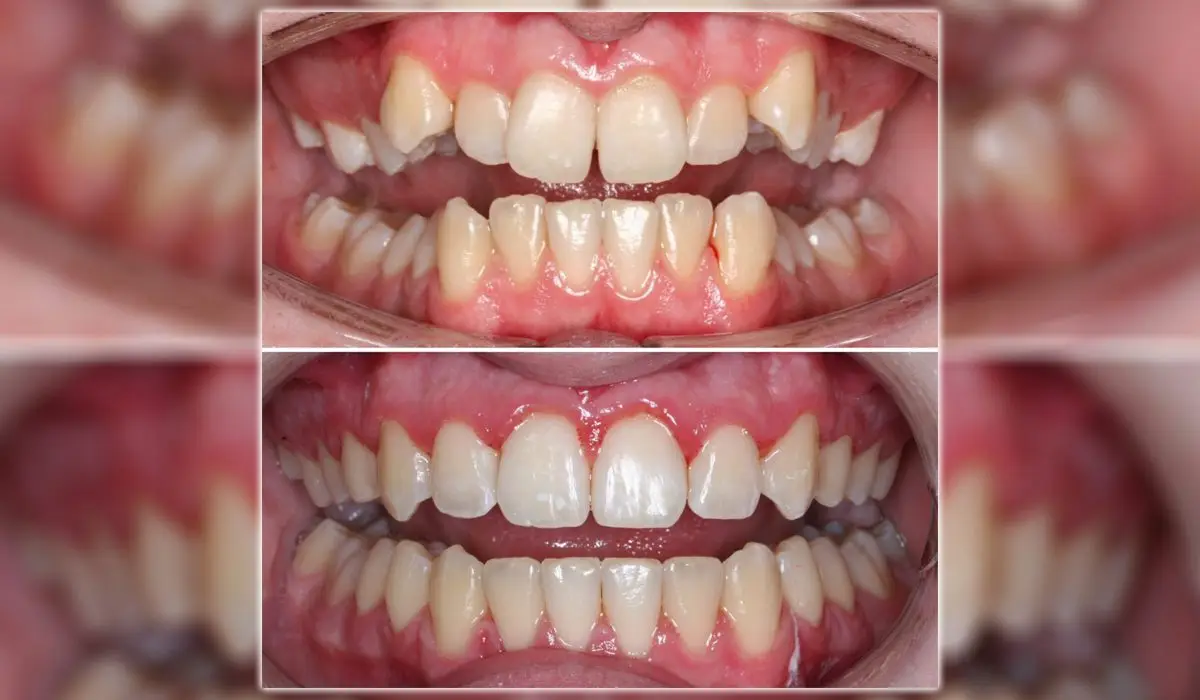Frequently Asked Questions About Invisalign: Everything You Need to Know
Frequently Asked Questions About Invisalign: Everything You Need to Know
Blog Article
Invisalign vs. Standard Dental braces: Which Option Is Right for You?
When taking into consideration orthodontic therapy, the option in between Invisalign and standard dental braces offers a number of crucial aspects that warrant cautious analysis. Invisalign supplies a discreet choice with removable aligners, while typical braces give a more noticeable yet effective remedy for extreme imbalance. Each alternative incorporates distinctive advantages and downsides connected to aesthetic appeals, convenience, therapy period, and cost. Recognizing these nuances is vital for making an informed decision that straightens with your personal choices and lifestyle. The inquiry continues to be: which choice will best fulfill your orthodontic needs and assumptions?
Overview of Treatment Choices

On the other hand, typical braces are composed of steel brackets and cables that are adhered to the teeth. This method applies continual pressure with time to accomplish alignment. While reliable for complex orthodontic problems, traditional dental braces require normal gos to for adjustments and can posture difficulties in maintaining dental health as a result of the difficulty of cleaning up about cables and brackets.
Both options have their merits, and the selection usually rests on specific dental conditions, lifestyle choices, and client compliance. Eventually, getting in touch with an orthodontic specialist is vital for figuring out one of the most suitable therapy strategy customized to specific demands. Recognizing the subtleties of each choice can significantly influence the overall success of orthodontic therapy.
Visual Factors To Consider
A significant factor influencing the option in between Invisalign and traditional dental braces is the visual charm each treatment supplies. Invisalign aligners are crafted from clear plastic, making them virtually unseen when put on. This very discreet appearance is particularly interesting teens and adults who may really feel uneasy concerning their orthodontic treatment. The capability to keep a natural smile throughout the positioning process can considerably boost the person's confidence in social and expert settings.
In comparison, traditional dental braces contain steel braces and wires, which can be more recognizable. While innovations in orthodontic innovation have actually resulted in the development of smaller brackets and tinted elastics, standard dental braces still preserve an even more noticeable profile. For some people, the exposure of braces might prevent them from seeking essential therapy.
Eventually, the choice in between Invisalign and typical braces may pivot on individual choices concerning aesthetic appeals. People who prioritize discretion usually lean toward Invisalign, while those that are much less concerned about visibility might select traditional dental braces. Comprehending the visual effects of each alternative is crucial for making an informed decision that straightens with one's way of life and preferences.
Convenience and Convenience

In terms of ease, Invisalign aligners are detachable, enabling clients to enjoy their favored foods without limitation and maintain optimum dental hygiene. Cleaning and flossing are streamlined, as the aligners can be obtained during these routines, whereas typical dental braces call for mindful navigating around brackets and cords.
In contrast, typical dental braces require normal changes, making them get redirected here much less convenient for those with hectic timetables. Overall, the comfort and benefit of Invisalign make it an attractive option for several individuals looking for orthodontic treatment.
Therapy Duration and Efficiency
While both Invisalign and traditional braces are efficient in dealing with dental misalignments, the period of therapy can vary considerably in between both choices. Normally, Invisalign therapy can take anywhere from 12 to 18 months, depending on the complexity of the situation. The clear aligners function by progressively shifting teeth into their desired settings, and routine Get More Information follow-ups with an orthodontist assistance make sure progress remains on track.
On the other hand, standard dental braces frequently need a longer commitment, typically ranging from 18 months to three years. This is because of their fixed nature and using brackets and cables, which can be more efficient for serious imbalances and complicated situations (Invisalign). The treatment efficiency of standard braces is well-documented, as they enable for accurate modifications and higher control over tooth movement
Inevitably, the selection in between Invisalign and standard braces may rest on both the anticipated therapy period and the details oral concerns handy. Consulting with an orthodontist is vital, as they can give customized suggestions based on private needs, making sure the selected approach straightens with desired timeframes and outcomes.
Price Contrast and Insurance Policy Choices
Cost plays a substantial duty in the decision-making process for people considering orthodontic treatment, whether selecting Invisalign or standard braces. Typically, the expense of Invisalign ranges from $3,000 to $8,000, while typical braces typically cost between $2,000 and $6,000. Aspects influencing these prices include the complexity of the instance, the period of treatment, and geographical location.
Insurance protection can substantially impact out-of-pocket costs. Lots of oral insurance plans give partial protection for orthodontic treatments, however the specifics can differ commonly. It is crucial for patients to examine their insurance coverage plans to identify the degree of coverage for either choice. Usually, conventional read this braces might be extra regularly covered by insurance coverage strategies contrasted to Invisalign, which some insurance companies categorize as a cosmetic treatment.
Furthermore, numerous orthodontic techniques provide versatile settlement plans, making both treatment choices more easily accessible. Clients need to ask about potential funding choices and price cuts for upfront settlements. Assessing the complete expense, consisting of insurance policy benefits and settlement strategies, is essential for making an informed choice that straightens with both aesthetic preferences and budget factors to consider.

Final Thought
In recap, the choice in between Invisalign and traditional braces hinges on several aspects, consisting of visual choices, convenience, therapy period, and price. Invisalign supplies a very discreet, removable choice that promotes dental hygiene and nutritional versatility, while typical braces may be better for complicated oral concerns and frequently come with a reduced price point. Eventually, appointment with an orthodontist is necessary to assess private conditions and identify the most ideal treatment alternative for achieving optimum dental alignment.
When taking into consideration orthodontic treatment, the option in between Invisalign and traditional braces offers several important variables that merit careful analysis.Comparing Invisalign and traditional dental braces exposes unique therapy choices for orthodontic improvement.While both Invisalign and conventional braces are effective in fixing dental misalignments, the period of treatment can differ substantially between the two alternatives.Expense plays a substantial duty in the decision-making process for individuals taking into consideration orthodontic treatment, whether deciding for Invisalign or standard dental braces.In recap, the choice in between Invisalign and standard braces pivots on numerous aspects, including aesthetic choices, comfort, treatment period, and expense.
Report this page